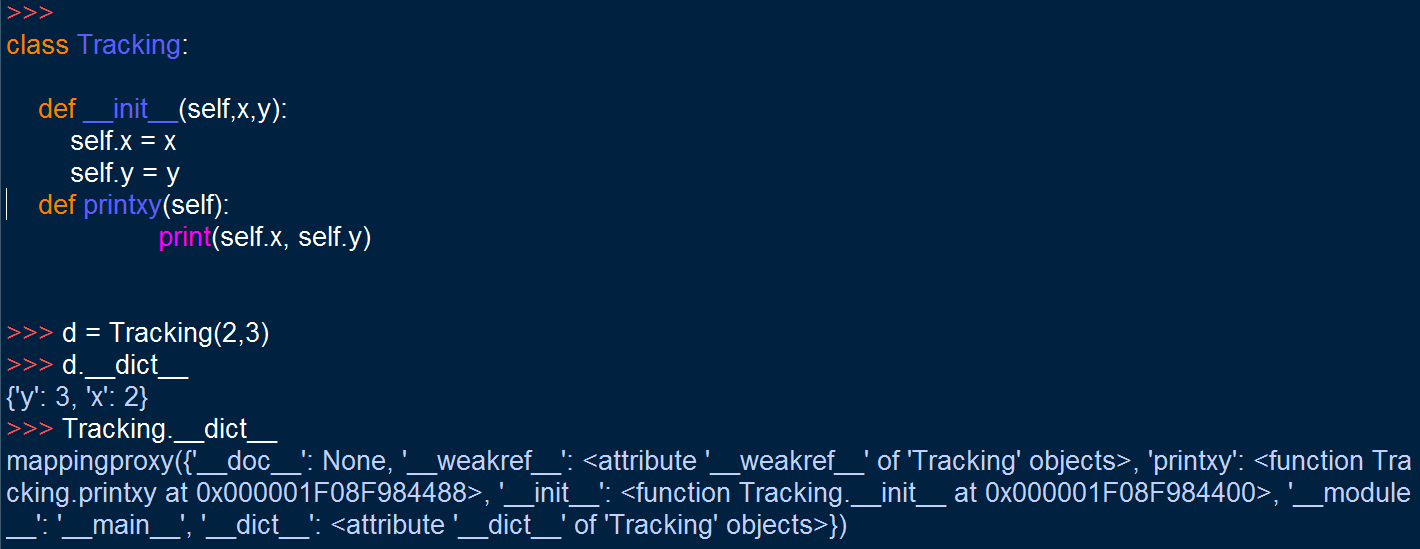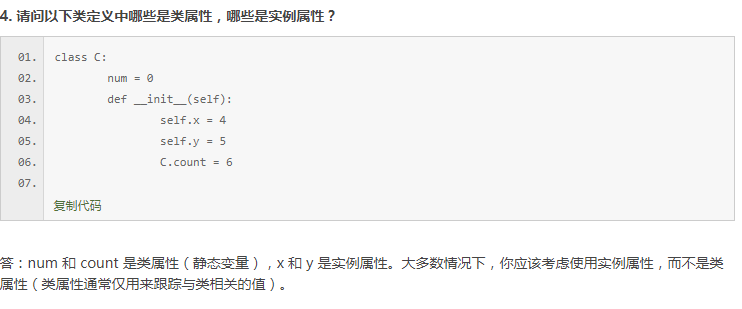00--
class, class object, instance object
As shown below, Tracking is a class, and itself it's own class oject. in the object, __dict__ will have all the original data; d is the instance object of Tracking class with value (2,3), and __dict__ data for d is unique for d. the class object's data in __dict__ still the same for the next newly created instance object.

001-- to add a attribute in the Class to trace how many related objects have been created :
class Tracking: count = 0 def __init__(self,x,y): self.x = x self.y = y Tracking.count += 1 def __del__(self): Tracking.count -= 1
Running result:

002-- define a Stack class with below functions
a-- isEmpty() to check if the Stack is empty (return True or False)
b-- push() add a data from top
c -- pop() pop a data from top
d -- top() to show a data from top
d -- bottom() to show a data of bottom
class Stack(list): count = 0 def __init__(self): Stack.count +=1 self = [] def __del__(self): Stack.count -=1 def isEmpty(self): return not len(self) # to check if any data in it def push(self,x): self.append(x) #to add a data from top print('data have been added') def top(self): return self[len(self)-1]#to show the data of top def bottom(self): return self[0]#to show the data in the bottom
Standar:
class Stack: def __init__(self, start=[]): self.stack = [] for x in start: self.push(x) def isEmpty(self): return not self.stack def push(self, obj): self.stack.append(obj) def pop(self): if not self.stack: print('Warming: Stack is empty!') else: return self.stack.pop() def top(self): if not self.stack: print('Warming: Stack is empty!') else: return self.stack[-1] def bottom(self): if not self.stack: print('Warming: Stack is empty!') else: return self.stack[0]
003-- class combination
// turtle class class Turtle: def __init__(self, x): self.num = x // Fish class class Fish: def __init__(self, x): self.num = x // Pool class class Pool: def __init__(self, x, y): self.turtle = Turtle(x) // combine with class Turtle self.fish = Fish(y) // combine with class Fish def print_num(self): print("There are Turle %d ,Fish %d in the Pool!" % (self.turtle.num, self.fish.num)) >>> pool = Pool(1, 10) >>> pool.print_num()
004-- please note that if the attribute's name is the name as function's, then it will overwrite function.
class C: def x(self): print('Xman') >>> c = C() >>> c.x() Xman >>> c.x = 1 >>> c.x 1 >>> c.x() Traceback (most recent call last): File "<pyshell#20>", line 1, in <module> c.x() TypeError: 'int' object is not callable
